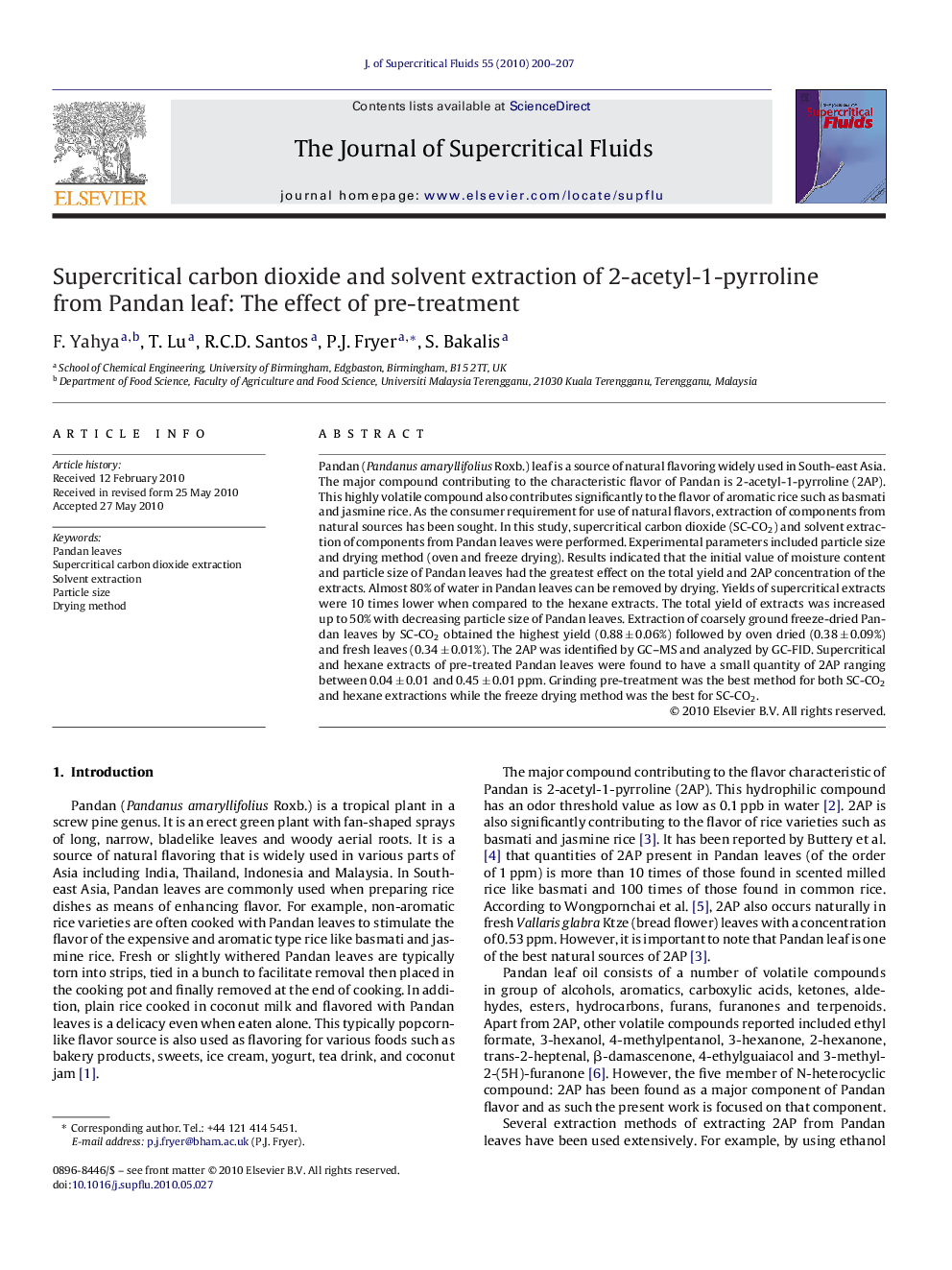| Article ID | Journal | Published Year | Pages | File Type |
|---|---|---|---|---|
| 231335 | The Journal of Supercritical Fluids | 2010 | 8 Pages |
Pandan (Pandanus amaryllifolius Roxb.) leaf is a source of natural flavoring widely used in South-east Asia. The major compound contributing to the characteristic flavor of Pandan is 2-acetyl-1-pyrroline (2AP). This highly volatile compound also contributes significantly to the flavor of aromatic rice such as basmati and jasmine rice. As the consumer requirement for use of natural flavors, extraction of components from natural sources has been sought. In this study, supercritical carbon dioxide (SC-CO2) and solvent extraction of components from Pandan leaves were performed. Experimental parameters included particle size and drying method (oven and freeze drying). Results indicated that the initial value of moisture content and particle size of Pandan leaves had the greatest effect on the total yield and 2AP concentration of the extracts. Almost 80% of water in Pandan leaves can be removed by drying. Yields of supercritical extracts were 10 times lower when compared to the hexane extracts. The total yield of extracts was increased up to 50% with decreasing particle size of Pandan leaves. Extraction of coarsely ground freeze-dried Pandan leaves by SC-CO2 obtained the highest yield (0.88 ± 0.06%) followed by oven dried (0.38 ± 0.09%) and fresh leaves (0.34 ± 0.01%). The 2AP was identified by GC–MS and analyzed by GC-FID. Supercritical and hexane extracts of pre-treated Pandan leaves were found to have a small quantity of 2AP ranging between 0.04 ± 0.01 and 0.45 ± 0.01 ppm. Grinding pre-treatment was the best method for both SC-CO2 and hexane extractions while the freeze drying method was the best for SC-CO2.
Graphical abstractFigure optionsDownload full-size imageDownload as PowerPoint slide
